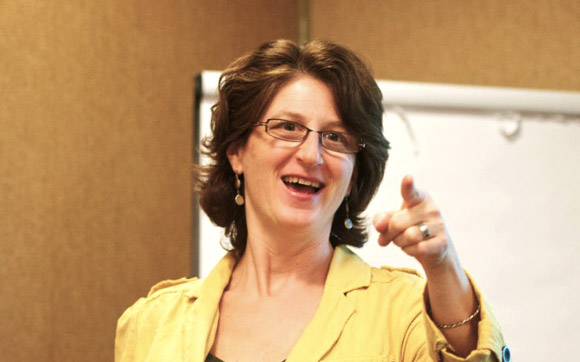Recently we spoke with Debra Askanase, founder of Community Organizer 2.0, which provides digital media strategy consulting to nonprofits, to learn more about why organizations should invest resources in building communities, especially through social media, and how best to go about it.
Two major points came across:
1. The Two-Way Street.
Too many organizations simply send out a stream of information that washes over supporters. Instead, communication between an organization and its supporters is best structured as a two-way street.
This means not only soliciting opinions of supporters and listening to them, but also taking action based on their input (or at least showing that action was considered and sharing why it was thought not to be in the best interests of the cause).
Debra told us that, “This requires many organizations to flip traditional communication strategies around. Where you used to speak, you now listen; where you used to dictate ways to get involved, you now create opportunities instead.”
2. Leadership Development.
Identification of “superfans,” and inviting them to become more involved, is key to developing fresh leadership and amplifying support for your cause. “Superfans” are those supporters that show up most often to events, are most vocal on social media, and are otherwise showing consistent engagement. Reach out to these people and find appropriate ways for them to be more deeply involved.
Finding the Superfans
So, how do you open up a two-way street and spot candidates for leadership? “Be the convener of a conversation,” says Debra. Social media platforms are a great place to get supporters engaged and spark discussion.
This goal should be approached thoughtfully, however:
- First, brainstorm about who your target audience might be, both demographically and in terms of what is important to them.
- Then, test your assumptions. You likely have a sense of who your core audience is, but when it comes to social media, you’re going to have to do a bit of experimentation. Try a) different questions, posts, and polls on b) different platforms at c) different times, with the goal of more clearly defining your audience.
- Next, engage them. Once you know who’s out there, tailor content for them so that they get interested, excited, and motivated to become involved. You’ll know you’re on the right track when you see increases in comments, fans, and followers.
- Close the circle by demonstrating that supporter input matters. If you asked a question, report back with the answer and your evaluation of what it means. If you polled supporters about a choice, let them know what happened after you took action on their suggestion. The goal is to show them that when they speak, you listen and take action.
- Finally, review those that are most engaged and find creative ways for superfans to become more deeply involved (e.g. by heading an advisory board, by opening a local chapter, by taking the lead on grassroots fundraising, etc.). Emotional connections with superfans make your cause stronger.
There are really no limits to the benefits of building communities in this way. When supporters are engaged and allowed to emerge as leaders, they create new opportunities, recruit new supporters, and bring fresh ideas to the table. Instead of your “community net” being made from passive, thin connections, it becomes tightly woven through strong, energetic, emotional bonds.
This also provides a boost to fundraising efforts. As Debra explained, “Communities are built by people who care, and when supporters care deeply, they care about raising money for the cause.
To learn more about building communities, visit Community Organizer 2.0. Or, for more digestible info, follow Debra’s Twitter account.






